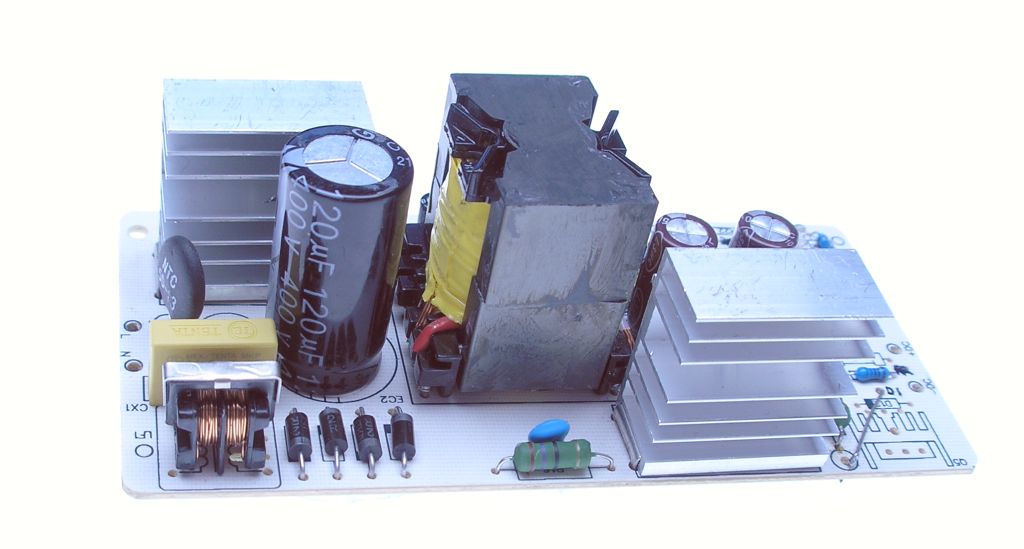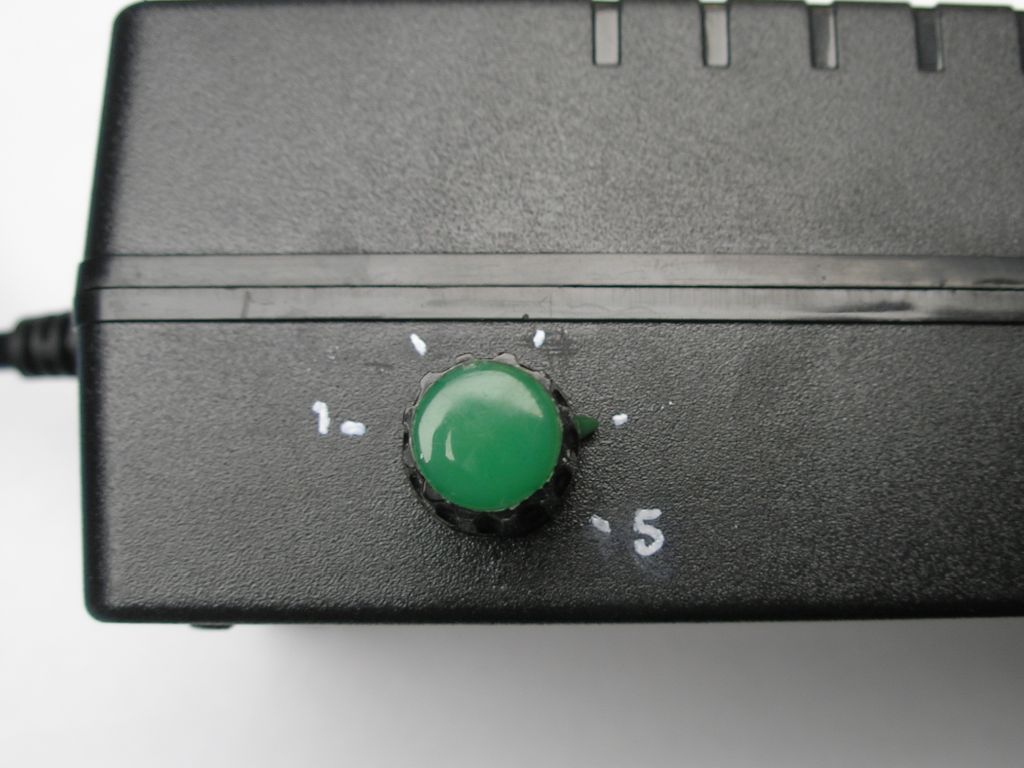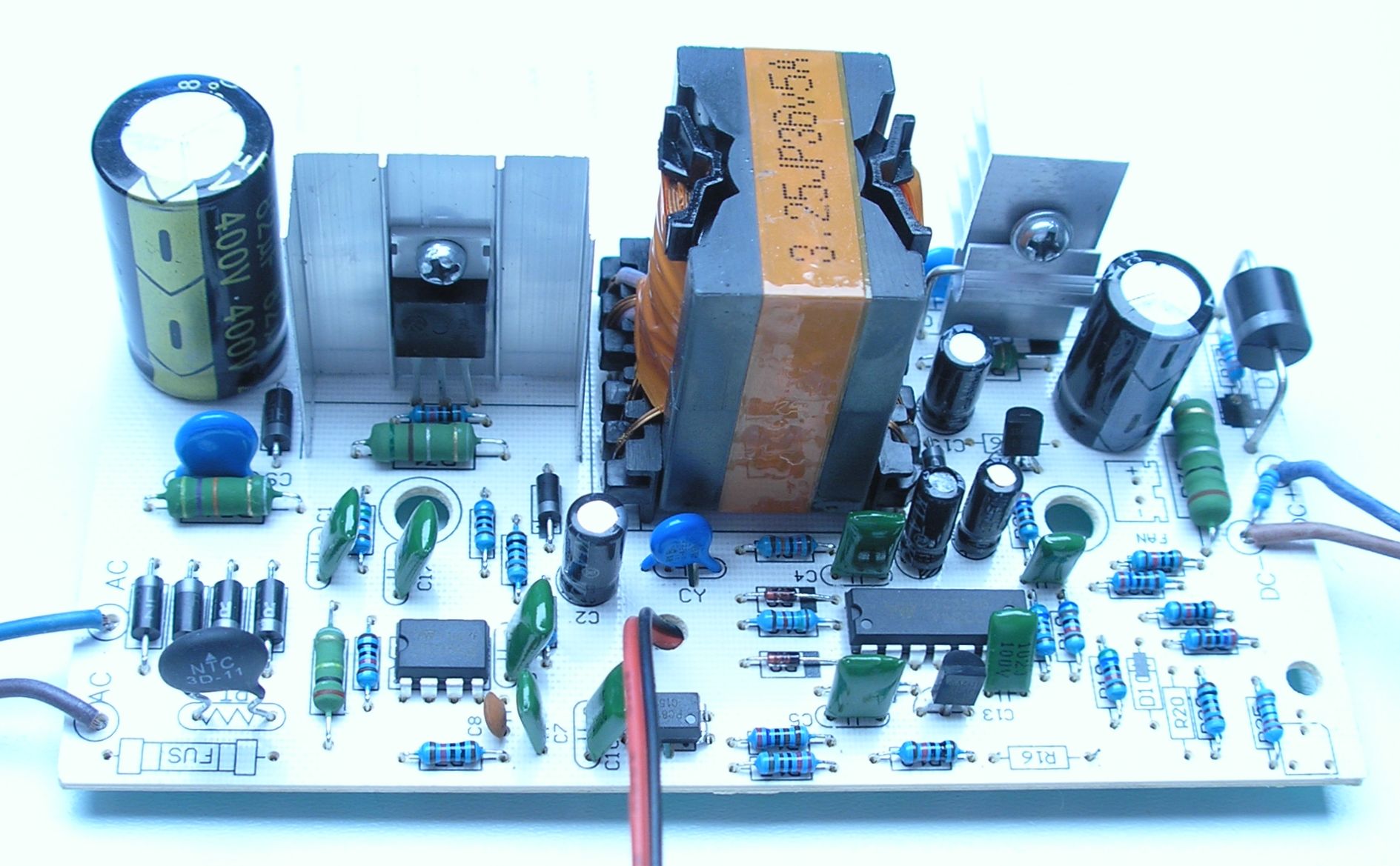DIY adjustable lightweight 1A to 5A ebike battery charger
Related articles
- Ultra fast charging batteries for e-bikes
- Battery management system (BMS) with internal resistance (IR) compensation
Introduction
The Amazon battery charger is particularly lightweight, but its charging current is 5A, which is often much higher than the maximum allowable charging current for e-bike batteries. As a result, I have come up with a modification that allows you to adjust the charging current with a potentiometer, from 1A to 5A.
Amazon 36V 5A flyback CR6842S battery charger
 DIY adjustable lightweight 1A to 5A ebike battery charger
DIY adjustable lightweight 1A to 5A ebike battery charger
I came across a remarkably lightweight 36V 5A battery charger on Amazon. I took it apart to see how it works. It is a flyback converter without output filtering chokes, which explains the low weight. The Amazon charger has no brand of type number, from now on we will call it the CR6842S charger, since that is the used controller chip. We will discuss the CR6842S later.
 DIY adjustable lightweight 1A to 5A ebike battery charger
DIY adjustable lightweight 1A to 5A ebike battery charger
To save weight, instead of large and heavy heat sinks, small heat sinks are used which will be forced cooled by a powerful, but lightweight, cooling fan. The fan will also have to cool the transformer because it will get very hot.
Note that it doesn’t have PFC and therefore does not comply with CE regulations.
 DIY charge current adjust modification
DIY charge current adjust modification
 DIY charge current adjust modification
DIY charge current adjust modification
CR6842S green-power PWM controller with frequency jittering
The Amazon charger uses a remarkably advanced SMPS controller, the CR6842S from ChipRail.
The CR6842 is compatible with the OB2269 from On-Bright Integrations.
I have reengineered the circuit from the Amazon flyback CR6842S battery charger. You can download the Eagle schematic at GitHub here.
 DIY adjustable lightweight 1A to 5A ebike battery charger
DIY adjustable lightweight 1A to 5A ebike battery charger
The CR6842S has a built-in frequency jittering for better EMI signature. What is striking is that it has no RC compensation circuit for controlling the stability.
Who can tell more about this?
There's something else that surprises me:
Although, the CR6842S controller is very advanced, it is not be sold by Mouser or Digikey.
Who can tell me why not?
Other Amazon charger with the UTC3842D controller
The battery charger that I bought on May 2022 at Amazon has a different circuit board as you can see, and doesn't use the advanced CR6842S controller, but the traditional UTC3842D controller.
 36V 5A charger at Amazon with UTC3842D chip
36V 5A charger at Amazon with UTC3842D chip
Links
- https://www.lcsc.com/datasheet/lcsc_datasheet_2304140030_Chip-Rail-CR6842_C433386.pdf
- http://www.sacg.com.tw/sacweb/marcom/epaper/images/SG6842%20V1.0.pdf

